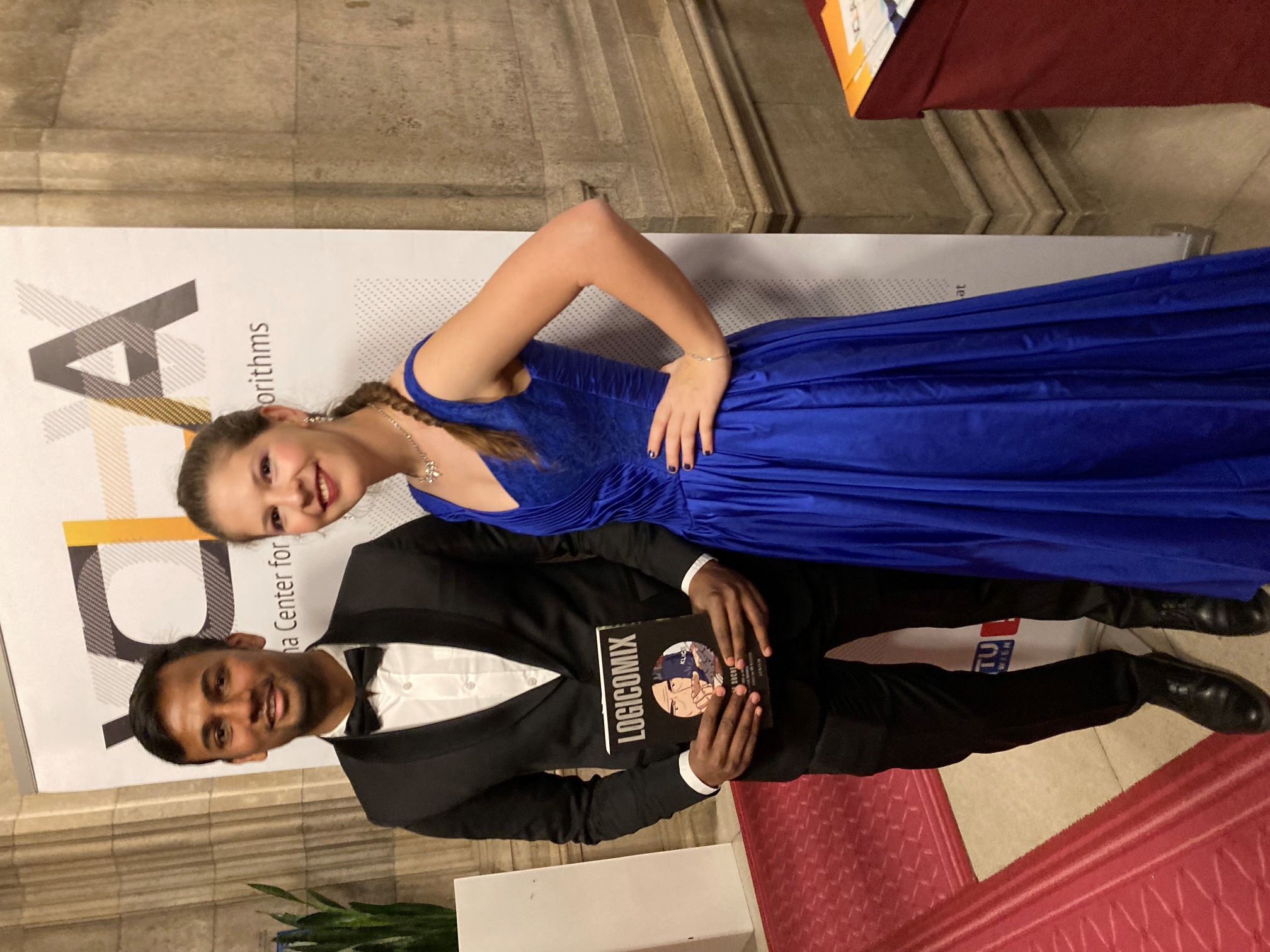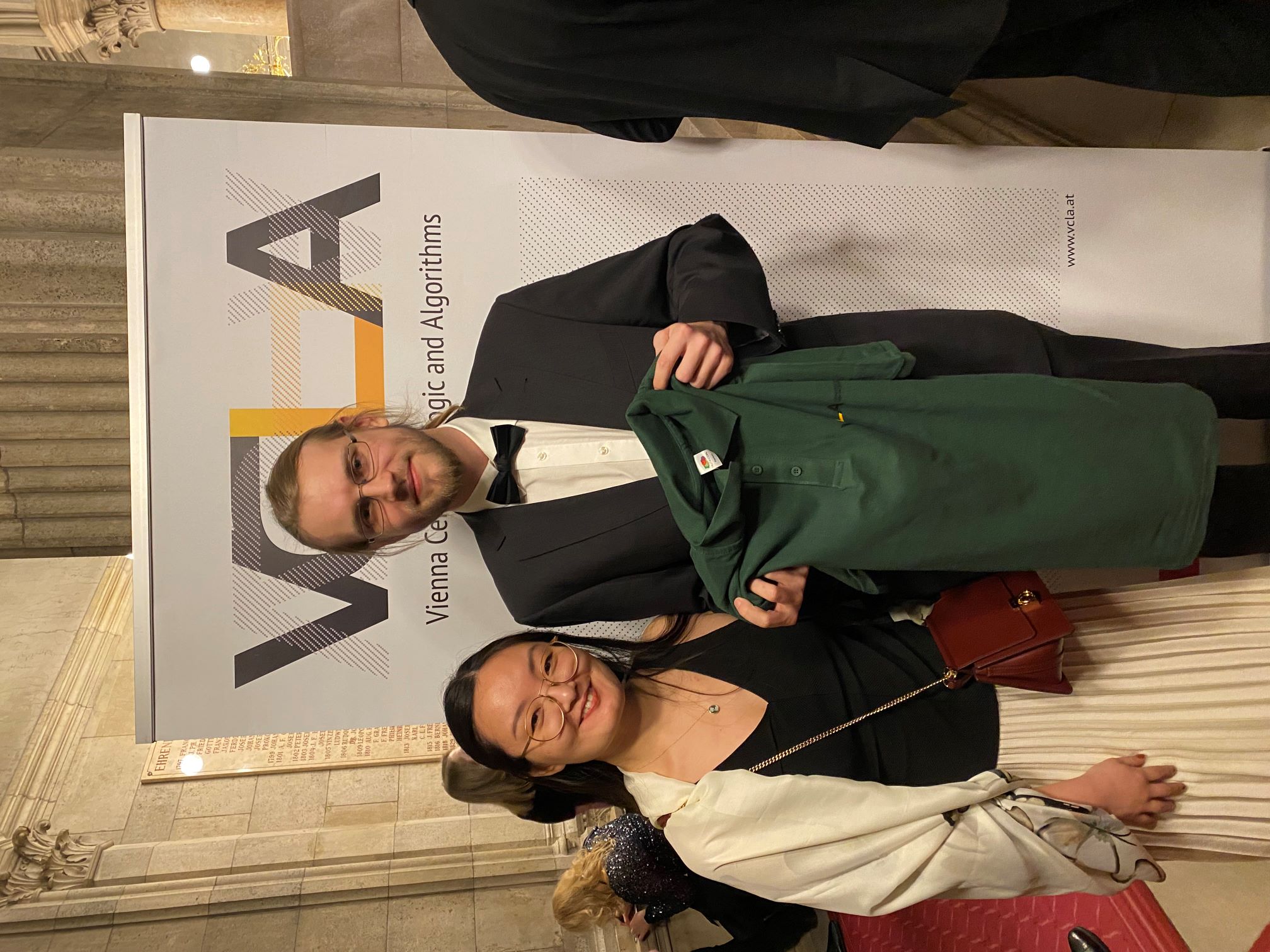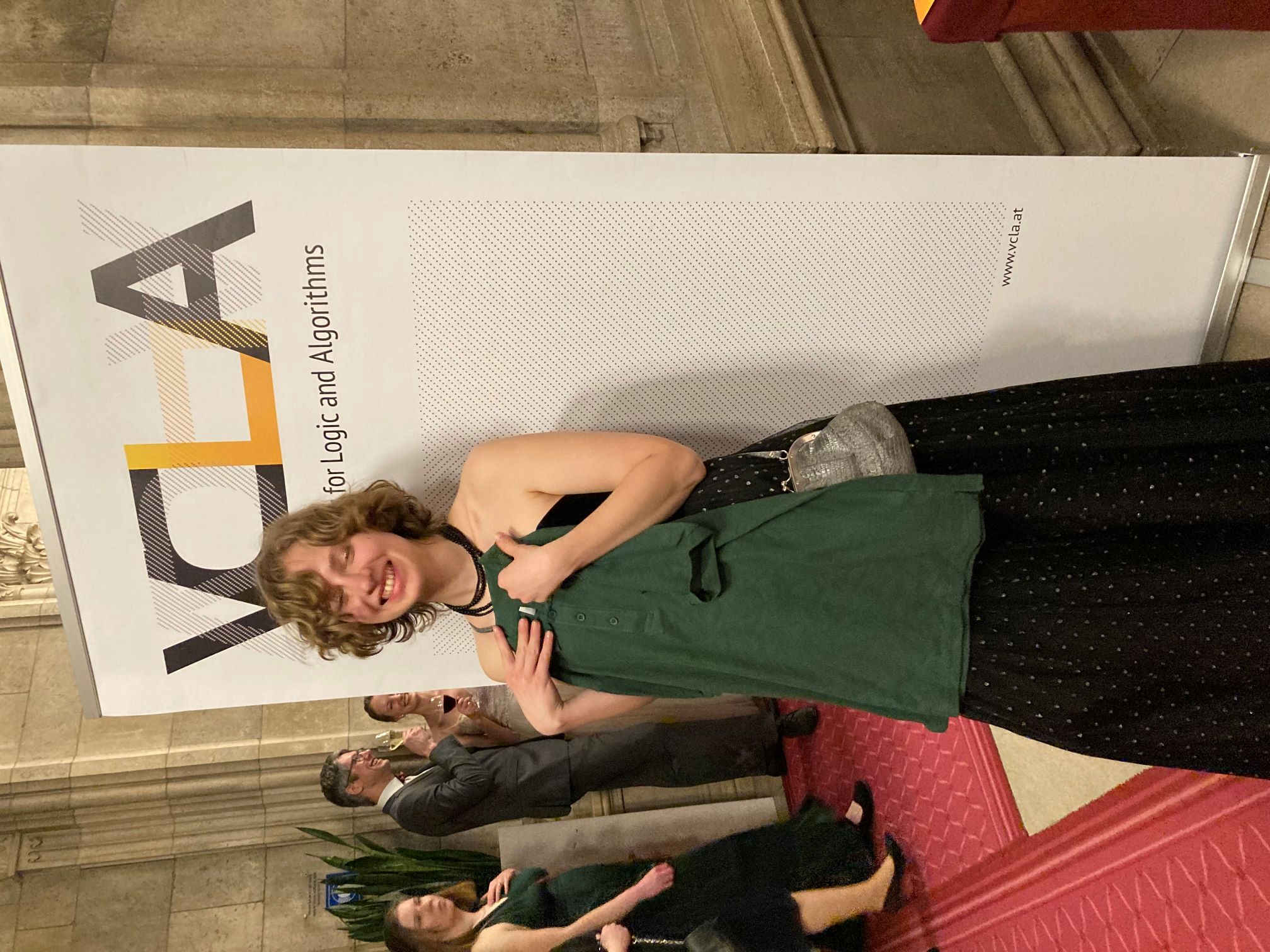Vienna Ball of Sciences 2024
| DATE: | Saturday, January 27, 2024 |
| TIME: | 20:00 |
| VENUE: | Wiener Rathaus (city hall) |
It’s ballroom dancing season again! The Vienna Ball of Sciences 2024 was held on Saturday, January 27, at Vienna’s city hall (Rathaus). As part of the many attractions of the event, ball guests were again asked to put their logic skills to the test! As the topic of the ball was the climate crisis, this year’s logic puzzle “Climate Journey” required visitors to calculate the total CO2 emissions caused by five travelers on their journeys through Europe with different modes of transport. The puzzle was again created by Anouk Michelle Oudshoorn, a PhD student in our doctoral college LogiCS@TUWien. You may download the puzzle here, and then see if you arrived at the correct solution! The CO2 calculations are based on the website Mein Klimaschutz.
A heartfelt thanks goes to all volunteers at the VCLA stand: Anastasia Isychev, Michele Collevati (LogiCS@TUWien), and Tommaso Mannelli Mazzoli!
The fastest guest to solve the puzzle on the evening of the ball was Rishabh Sahu, a postdoc at the Institute of Science and Technology Austria (ISTA) – congratulations! Second place went jointly to Yilan Xu and Honghui Qian, and third place was awarded to Julia Mader and Benjamin Gallauner. Below are pictures of Rishabh (with puzzle author Anouk) and the other winners! It was great to see so many motivated guests – we were out of prizes early this year!
Since 2015, the Vienna Center for Logic and Algorithms is a proud partner of the Vienna Ball of Sciences. The cooperation was co-initiated by the late Prof. Helmut Veith. VCLA has in collaboration with researchers and doctoral candidates of the FWF funded doctoral college Logical Methods in Computer Science – LogiCS contributed to the ball’s scientific character with activities that stir curiosity, such as logic riddles and human-machine interaction.








